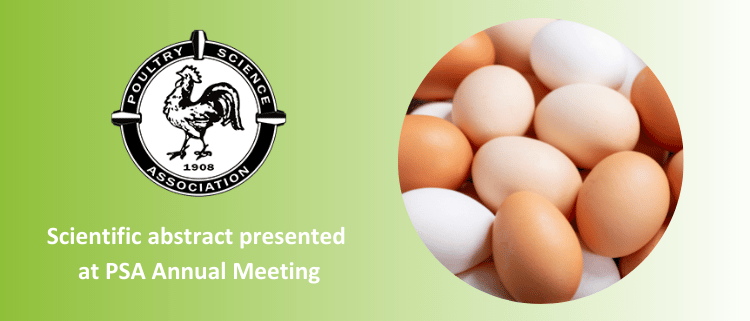Effects of a gut agility activator on egg production in layers
Dietary phytogenic inclusion level effects on egg production, egg quality and expression of ovarian cytoprotective genes in laying hens
Authors: Ioannis Brouklogiannis , Evangelos Anagnostopoulos , Vasileios Paraskeuas , Eirini Griela , Andreas Kern , Konstantinos, C. Mountzouris
Scientific Abstract: A 12-week study was conducted to investigate the effects of a phytogenic feed additive (PFA) inclusion level on egg production, egg quality and the expression of genes relevant for signaling inflammation (nuclear factor-kappa B; NF-kB), detoxification (aryl hydrocarbon receptor; AhR) and antioxidant capacity (Nuclear factor erythroid 2-related factor 2; Nrf2) in the ovaries of laying hens. The PFA consisted of ginger, lemon balm, oregano, and thyme substances. Laying hens (n=385; 20-wk-old; Hy-Line Brown) were randomly allotted to 5 dietary treatments with 7 replicates of 11 hens each. Dietary treatments included: a basal diet without PFA addition (CON), and basal diet supplemented with PFA at 500 (P500), 750 (P750), 1000 (P1000) and 1500 (P1500) mg/kg diet. Egg production and quality parameters were determined weekly until the 32nd week of layers age and reported as overall. At the end of the experiment, a layer from each replicate was randomly selected and euthanized and the ovaries were removed and stored deep frozen until gene expression analysis. The experimental data were analyzed by ANOVA procedure and statistical significance was determined at P<0.05. Biological response patterns with respect to the PFA inclusion level was studied using polynomial contrasts.
Results revealed that increasing PFA inclusion, enhanced linearly and quadratically egg laying rate, with P1000 birds being higher (P<0.001) compared to CON. Incremental levels of PFA linearly and quadratically increased albumen height and Haugh unit, with P750 and P1000 being higher (P<0.01) than CON. Shell mass increased quadratically with increasing PFA inclusion with peak at P1000 (P<0.05). In the ovaries, expression of the majority (13 out of 15) of NF-kB pathway genes assessed were down regulated (P<0.05) mainly at P1000 and P1500 treatments. From the AhR pathway genes, the expression of Cytochrome P450-B1 (CYP1B1) was linearly (P<0.01) and significantly (P<0.01) reduced with increasing PFA level. In addition, PFA related cytoprotective potential was demonstrated via beneficial changes seen for the majority (9 out of 11) of the Nrf2-pathway genes assessed with the P1000 displaying most significant differences from CON.
Conclusively, new data highlighted beneficial cytoprotective effects of PFA inclusion on layer ovaries and document further egg production and quality improvements, with the 1000 mg PFA/kg diet being the most prominent inclusion level.



